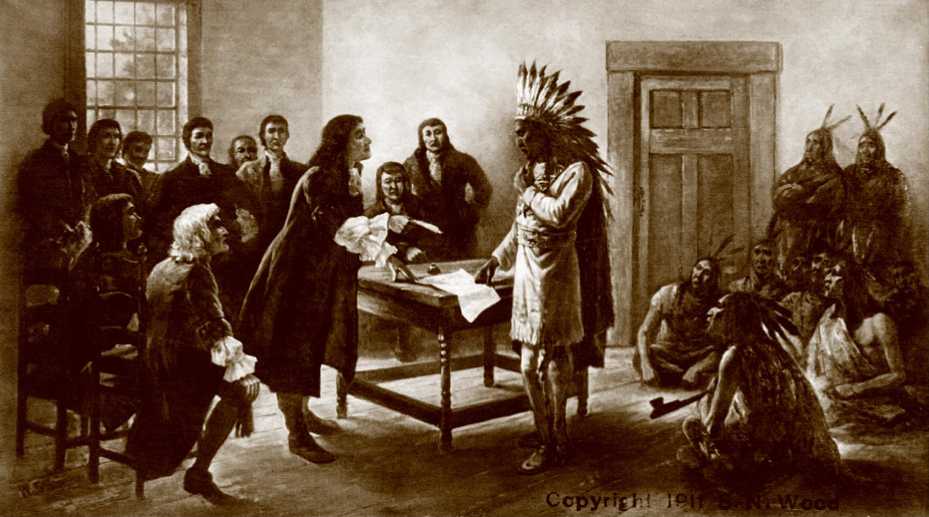Wamsutta’s brother. Metacomet, became the next leader of the Poka-noket. As the colonists continued taking land and tried to force the remaining natives onto reservations, the Pokanoket became angered at the English. Metacomet had grown up around
THE FIRST RESERVATION
When the Puritans settled in what would become New Haven, Connecticut, they met an Algon-quian band that they called the Quinnipiac. The Quinnipiac, already weakened by disease, numbered only 250 to 300 people. The Quinnipiac sachems signed a treaty with the Puritans on November 24,1638. That treaty included establishing or reserving land for the Quinnipiac on the east side of the harbor. But life there continued to be difficult. While some may have joined other Native American nations, the Quinnipiac are believed to have ceased existing as a separate nation past the American Revolution.
The Pilgrims and even had an English name. He was known as King Philip among the settlers. Metacomet looked among other Wampanoag for support against the colonists. John Sassa-mon, who served as Metacomet’s secretary for about lo years, warned the Plymouth leaders of Wampanoag plans to attack the colonists. Soon, Sassamon was found dead, and the Pilgrims tried and executed three Wampanoag for Sas-samon’s murder.
Tired of abuse and trickery from the colonists, many Wampanoag bands joined forces against the English under the leadership of
Metacomet. The warriors first attacked the town of Swansea in Plymouth Colony in June 1675 after a Wampanoag was killed there. They moved on to the northern settlements and burned some of the towns. As Metacomet gained allies among other Wampanoag bands, the conflict known as King Philip’s War spread throughout New England.
At the beginning, it looked liked the Wampanoag might win. Except for a colonial victory at the Great Swamp in Rhode Island, Metacomet’s forces had been successful. Yet as the conflicts multiplied, the limited Wampanoag forces

As sachem of the Wampanoag, Metacomet (known as King Philip to the whites) discussed a treaty with the settlers.
Began faltering. Outnumbered by the colonists, the Wampanoag suffered from the lack of food and ammunition. The colonists also gained help from other Native Americans, such as the Mohawk, who sided with them. After more than a year of fighting, Wampanoag forces retreated.
The English colonists fought with a vengeance, burning many of the Wampanoag villages that they came across. They also left strong messages behind. When Wamsutta’s widow drowned during an escape, the colonists cut off her head and displayed it in the town. An informer, John Alderman, led forces to Metacomet before shooting and killing the noted sachem. Alderman was given one of Metacomet’s hands as a trophy. Metacomet’s head was put on a pole in Plymouth, where it remained for 25 years as a grisly message to other Native Americans. Metacomet’s nine-year-old son was captured and imprisoned. After some debate among the colonists, he was sent to the West Indies as a slave.
Although the war more or less ended with Metacomet’s death, it would take another two years before a peace treaty was signed. Until that happened, the British hunted down Metacomet’s allies until the Wampanoag were almost exterminated.
The deadly conflict between the colonists and the Algonquian people devastated the colonies, but the native people of the area paid the greatest price. Entire families were sold into slavery. Others escaped by fleeing to Canada. Some Wampanoag refused to leave their home and adapted to living among the colonists. In less than 100 years, only 400 Wampanoag survived the epidemics, conflicts, and wars, of the 12,000 Wampanoag who had lived in New England in 1600.
Today, the Wampanoag Nation, established in 1928, includes five bands of about 3,000 people. Only the Gay Head Wampanoag are a federally recognized band.




 World History
World History









